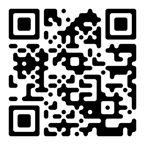March 03, 2025
Tag:
In the complex system of the food industry, ensuring the quality and safety of food is a top priority. As an efficient and accurate inspection instrument, refractometer plays a key role in the field of food inspection, providing strong support for food production, processing and quality control.
Working principle of refractometer: clever use of light refraction phenomenon
Refractometers operate on the principle of refraction of light. When light passes from one medium to another with a different refractive index, the direction of light propagation changes, and the degree of this change is related to the refractive index of the two media. The refractometer accurately measures the change in refraction Angle between the air and the food sample, and uses a specific mathematical algorithm to convert it into the refractive index value of the food sample. Different ingredients and concentrations of food have a specific refractive index range, with this property, refractometer can analyze and detect a variety of food properties.
Application in the detection of food moisture content
1. The relationship between moisture content and refractive index: Moisture content in food has a significant impact on its taste, shelf life and microbial stability. In most cases, the refractive index of food will change with the change of water content. For example, in fruit drinks, the higher the water content, the lower the refractive index. By establishing the standard curve of refraction ratio and moisture content, the refractometer can quickly and accurately determine the moisture content of food.
2. Testing process and advantages: When testing, just place the right amount of food sample evenly on the sample table of the refractometer, the instrument can quickly measure the refractive index, and then convert the moisture content through the pre-established standard curve. Compared with traditional moisture detection methods such as dry weight loss method, refractometer detection has the advantages of fast, non-destructive and simple operation, which can provide a large amount of data for food production enterprises in a short time and facilitate timely adjustment of production process.
Application in the detection of sugar concentration in food
1. The importance of sugar detection: sugar is an important part of many foods, and its concentration is directly related to the sweetness, flavor and nutritional value of foods. In the beverage, confectionery, baked goods and other industries, precise control of sugar concentration is essential.
2. Application examples of refractometer: Taking fruit juice production as an example, refractometer can accurately measure the content of soluble solids in fruit juice, and most of the soluble solids are sugar. By measuring the refractive index, manufacturers can precisely control the sugar content of the juice, ensuring that the product taste is consistent, while also avoiding the impact of too much or too low sugar on product quality. In addition, in honey detection, refractometer can be used to judge the maturity of honey, mature honey refractive index in a specific range, if the refractive index is too low, may mean that the honey water content is too high, poor quality.
Application in food oil quality testing
1. Oil refraction is related to quality: The refraction of oil is closely related to its fatty acid composition, purity and whether there is oxidation. Pure and unoxidized oils have a specific refractive index range, which changes significantly when the oil is oxidized, rancidity, or adulterated.
2. Detection significance and operation: In the process of cooking oil production, the refractometer can be used to monitor the degree of oil refining. At different stages of refining, the refraction of the oil is measured and compared with the standard value to determine whether the refining is up to standard. At the same time, in the market supervision, the refractometer can be used to detect whether the edible oil is adulterated, such as the incorporation of low-cost soybean oil in olive oil, the refraction rate will deviate from the normal range of olive oil, so as to help the regulatory authorities to identify shoddy products and protect the rights and interests of consumers.
Potential applications in the detection of food additives
1. Food additives and refractive index changes: the addition of some food additives will change the refractive index of food. For example, adding certain thickeners, sweeteners, etc., to food may cause detectable changes in food refraction. Although the refractometer has not been widely used in the detection of food additives, with the deepening of research, it is expected to become an auxiliary means to quickly screen whether food additives exceed the standard.
2. Research direction and prospect: Researchers are exploring the law of the influence of different food additives on refractive index and establishing the corresponding database. In the future, by measuring the refractive index of food and comparing it with the data in the database, it is possible to quickly determine the type and approximate content of additives in food, and provide technical support for the compliant use of food additives.
With its unique working principle and efficient detection ability, refractometer plays an irreplaceable role in the field of food detection. From moisture content to sugar concentration, from fat quality to potential food additive detection, refractometers provide solid technical support for food quality and safety, and promote the food industry to develop in a more high-quality and safe direction.


Contact Us
Tel: (+86) 400 610 1188
WhatsApp/Telegram/Wechat: +86 13621645194
+86 15021993094
Follow Us:




 Pharma Sources Insight July 2025
Pharma Sources Insight July 2025


